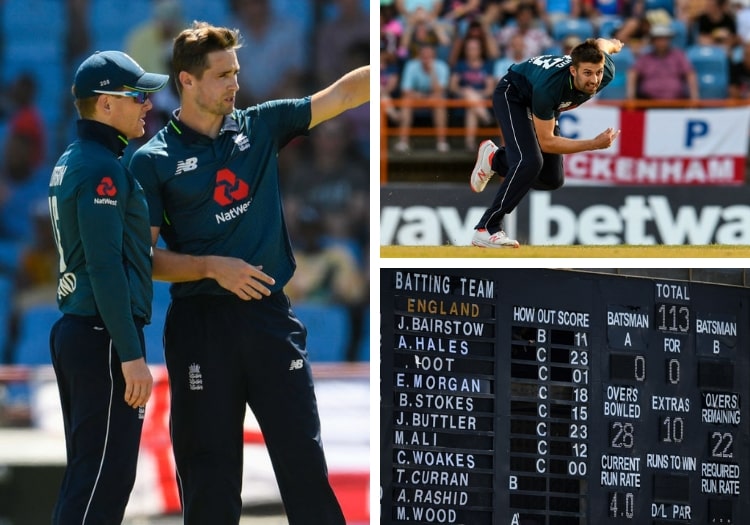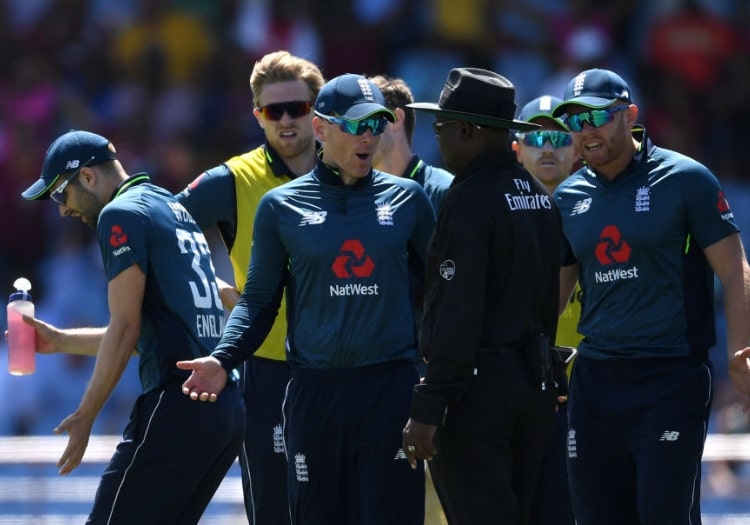SIMON HUGHES: Mark Wood is absolutely essential to England’s World Cup campaign. If there’s one thing he could work on it would be a slighter improved slower ball which will be invaluable as a contrast to his fast arm and 90mph pace


Two main themes emerged from the England ODI series in West Indies: the value of genuine pace and the necessity for England to improve their reading of pitches.
In this week’s Analyst podcast we discuss how that might impact their 15-man squad for the World Cup, which has to be outlined by April 23. There are going to be some unlucky omissions.
England’s two most economical bowlers in that two-week onslaught in the Caribbean were their two quickest - Mark Wood and Liam Plunkett, though Plunkett has lost about 3mph over the last six months.
Wood is absolutely essential to England’s World Cup campaign. If there’s one thing he could work on it would be a slighter improved slower ball which will be invaluable as a contrast to his fast arm and 90mph pace.

England drew 2-2 with West Indies in the ODI series
It is the advantage of real deception that separates the ordinary ODI bowlers from the best, meaning exceptional disguises of significant changes of pace. It is for that reason that Jofra Archer is a certainty for England's one-day squad.
Not only can he produce extreme pace - the odd ball has been clocked at 94mph - but he has several clever slower balls which, because of his easy, gliding approach and whippy action, are hard to detect. It is these sorts of assets which could be valuable when England next play West Indies in an ODI - at the Ageas Bowl in the World Cup.
It is a flat, lively pitch - with big boundaries - so a good fast short ball and excellent changes of pace will be vital. It is the only way to try to upset Chris Gayle, and even that didn’t work in St Lucia.
The one flaw in England’s batting is their occasional ability to implode.
"We keep making the same mistakes," said an unusually irritated Trevor Bayliss after the St Lucia defeat. It is usually when they are batting first and continue their gung-ho approach without assessing the conditions correctly.
With their fearless attacking mindset as the default, it is not easy to know when to switch strategy. It should probably be down to the top four in the order to accurately assess the pitch after the first 10 overs and work out what a winning score would be.
At that point in St Lucia they were 57 for 2. A couple of wickets lost in the powerplay is legitimate, but a cautionary note should have sounded when Alex Hales was caught behind off a rising ball from the modest pace of Carlos Brathwaite. They could at that point have recalibrated their ambitions to seeking 275 rather than still galloping headlong towards the promised land of 350.
England’s premier analyst Nathan Leamon is going to be invaluable in helping England devise the right strategy for the World Cup. His expertise is in crunching the numbers and establishing potentially winning scores (and the most successful run-scoring areas) on particular grounds.
What didn’t help him in St Lucia was the fact that there had only been three ODIs at the venue in the previous six years, and they were all against Afghanistan. So not much of a sample to go on.
His knowledge of English grounds and extrapolating skills will be a vital advantage for England in the World Cup. Provided the batsmen listen to him…
5th ODI TALKING POINTS: Gayle's force and England's lack of a Plan B